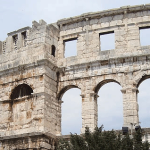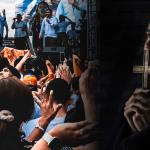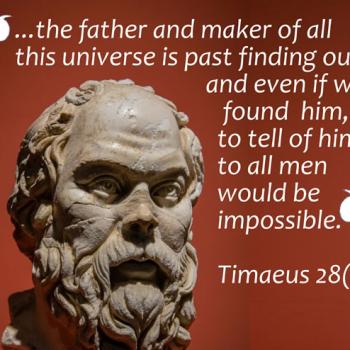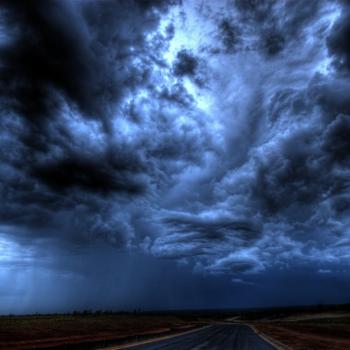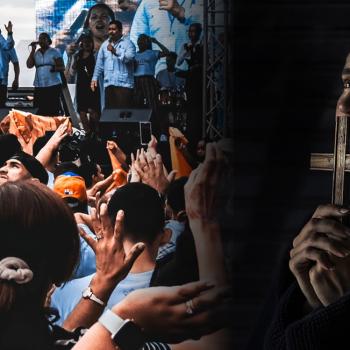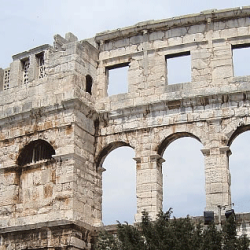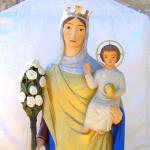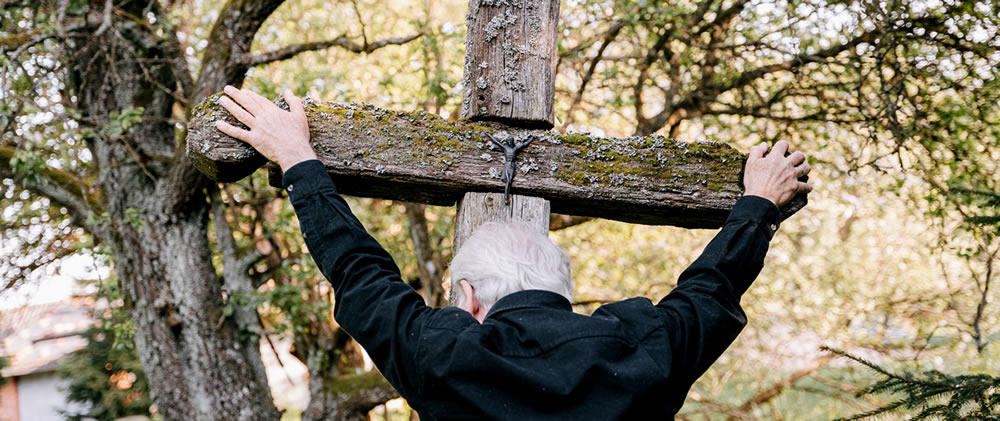
This is Part 3 of a presentation giving evidence of robust individualism (personal forgiveness) in early church history. This evidence shows that the “western” world did NOT lead Christianity into individualism. I disagree with modern theologians who claim that rampant individualism in the Christian faith is a “western” invention. Christianity has always had a strong pull towards individualism.
In the first section I offered evidence from the New Testament for personal forgiveness. In Part 2 we saw evidence of a high concern for personal forgiveness in the early fathers and documents of the first few centuries. Now we will look at intense individual faith that started in the third century.
Hermits and Monks – Early Christian Individualism

Around the year 276 AD a young man named Antony was walking to church. Out in the street before he entered the building he heard the words of Jesus being read, “Go, sell all of your possessions, give the money to the poor, and come follow me.” Antony immediately obeyed the words he heard, gave away his wealth and moved to the edge of town to live in a small house. Shortly after this he ventured into the desert to learn under an old hermit. After another bit of time Antony ventured farther out on his own into the deep desert where he lived for the next 25-30 years as a hermit.
[Fox, Robin Lane, Pagans and Christians in the Mediterranean World (Penguin 1986), p.412.]
This was the beginning of a movement. It is not easy to understand why, but men started moving into the desert to live in relative poverty and solitude. The movement grew slowly until Bishop Athanasius published Life of Antony in 356 AD after the monk died. As Life of Antony was copied and spread the numbers of men and women flocking to the ascetic life accelerated. These were the “Desert Fathers” and their fame spread throughout the Roman Empire. By around 390 AD Rufinus writes of “thousands” of men (and women) living in caves in the deserts of Egypt and Syria.
[Rufinus, History of the Monks, V]
The “Athletes of God”
We know about these desert hermits and monks through several accounts collectively known as The Sayings of the Desert Fathers. These Sayings give us a glimpse into the rigorous discipline and practical theology of Christians who were trying to live a life 100% dedicated to God. Many have written about the excesses of the monastic tradition – the overzealous use of discipline, self-denial, and obedience to a common rule. You will also find competition (who has the most rugged discipline) and dualism (comfort, enjoyment, pleasure…the world is evil).
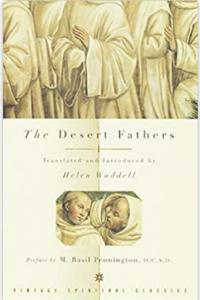
However, you should not be too quick to judge these men. As you read the Sayings you will also find wisdom, grace and humility. The good is side by side with spiritual arrogance and the ridiculous.
Examples of Wisdom from The Sayings
In one story some visitors come to visit an old hermit. He welcomed them, fixing them some soup and probably a piece of bread. Another brother, known for his strict discipline, came to join them. As the visitors supped their broth with the older monk, this other brother placed a single stewed pea on his plate. He delicately sliced it and chewed on it as if it were a piece of meat. After the visitors left the old man scolded the younger brother for “showing off” his rugged discipline. He told him that if he could not keep from showing off, “you should abide in thy cell and go nowhere out from it.” VIII.22.
[These citations come from Waddell, Helen, The Desert Fathers, New York 1998. The Verba Seniorum translated from the Latin.]
In another story two younger monks go into town to sell their wicker baskets in order to buy bread. They split up to more quickly sell their wares. At the appointed meeting place and time one young man failed to show up. The other, worried about his friend, set about searching for him down every alley. He found his friend sitting on the ground, distraught and hanging his head. When questioned the young man confessed that in his weakness he had “sinned in the flesh.” The other brother, “anxious to help him” lied saying he also “had ran into fornication. But let us go, and do penance together with all our might: and God will forgive us that are sinful men.” So they returned together, confessed their sins to the older monks and found forgiveness. “And verily this is to lay down one’s soul for one’s brother.” (V.27)
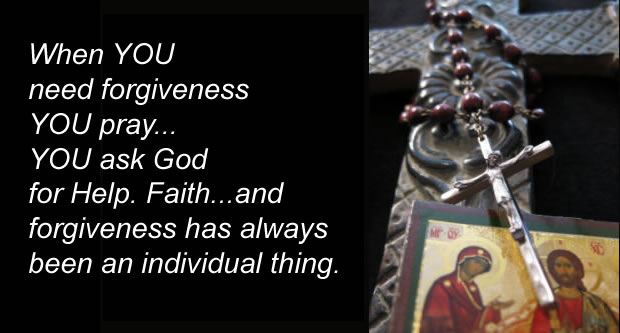
These monks typically lived alone in a small cave, wearing only a simple wool garment. Their bed was usually a reed mat on the ground. They ate very little: stewed cabbage or a small bit of vegetable soup and drank mostly only a minimal amount of water. On rare occasions one might drink a small amount of wine. Some would then abstain from water one day for each cup of wine consumed to “pay” for their luxury. (IV.26)
An older monk was once asked why they lived on such a small amount of food and water. His response went something like this:
“When my stomach aches from hunger and my throat is parched from thirst, there is little room in my heart for a lustful thought.”
[I am offering this citation from memory and have not been able to track it down. I found a similar saying in John Cassian’s “Conferences.” My apologies for this failure, but I think I have captured the essence of the quote. Download my paper: Introduction to ‘The Sayings of the Desert Fathers’]
While the Desert Fathers were extreme in their individualism and effort, they appear to have been surpassed by the “Pillar Saints” of the fifth century.
Simeon the Stylite
Hermit monks in Syria during the late fourth and early fifth centuries took personal “holiness” and discipline to new heights (pun intended). Simeon trained himself to live on very little sleep by standing during the night, leaning against the wall. This appears to be in an effort to pray all night.
In 412 AD Simeon left the monastery and ventured into the wilderness for deeper solitude. During Lent one year he had others seal him within a wall (apparently of an abandoned building) for 40 days.
Simeon eventually found that perching himself above the ground on some kind of pole or pillar suited his desire for more extreme discipline. He gradually increased the height of the poles until he finally perched himself on a 70ft high pillar with a small platform at the top where he lived for thirty years until his death. It was said that he stood praying all day long, bending at the knees in a genuflex. It is said that an eyewitness once watched Simeon with amazement, counting 1,244 such kneelings before he stopped counting. [Lietzmann, Hans, A History of the Early Church, Vol 4, (London 1960), pp.170-171]
Many others practiced this discipline of perching themselves on a pole. These were the “pillar saints,” perhaps the most extreme examples of Christian individualism.
These monks were highly motivated to live 100% of their lives for God. While some of them may have been emotionally or psychologically ill, most were of sound mind. Modern thinkers may hold them up to ridicule, but thousands of Christians living in the “modern” world have been challenged and encouraged by the lives of these men and women. They turned their backs on the “normal” Christian life and pushed for excellence. In her beautiful introduction to The Desert Fathers, Helen Waddell says this:
[Waddell (New York 1998), p.13]
Waddell goes on to comment on how rare it is that men criticize those who make extreme sacrifices for military service, science or sport, yet:
“The only field of research in which a man may make no sacrifices, under pain of being called a fanatic, is God.” (p.20)
For many Christians living in the 21st century, these men were extreme. Their lives, however, should not be marginalized. Most were not mentally ill or blinded by selfish “individualism.” They loved God and were trying their best to express that devotion.
In Part 4 (my Conclusion) I will summarize why “individualism” is part of the Christian faith. It cannot be blamed on the “western” world. I will offer some thoughts from the great 20th century theologian, Dietrich Bonhoeffer. Thank you for reading this article.


